Science nugget: Observations of mini coronal dimmings caused by small-scale eruptions in the quiet Sun - Solar Orbiter
observations of mini coronal dimmings caused by small-scale eruptions in the quiet sun
(Solar Orbiter nugget #19 by R. Wang1, Y. D. Liu1,2, X. Zhao3,4, & H. Hu1 )
Introduction
Solar eruptive activities, including flares, eruptive filaments, CMEs, and coronal jets, are widely distributed in energy scales. The observed solar eruptions span a range of at least a factor of 108 in energy [1]. Large, highly energetic “X-class” eruptions can release energy substantially exceeding ∼ 1033 ergs. Small-scale eruptions could play an important role in coronal heating, generation of SEPs, and mass source of the solar wind. However, they are poorly observed and their characteristics, distributions, and origins remain unclear.
Here, a mini coronal dimming was captured by the recently launched Solar Orbiter spacecraft. Coronal dimmings are considered to be an important characteristic of solar eruptions, which can provide mass information of eruptions.
Aims and Methods
We identify the characteristic structures associated with a small-scale eruption with greater certainty, owing to the 17.4 nm EUV HRI (HRIEUV ) of the EUI [2] on board Solar Orbiter. Solar Dynamics Observatory allows us to carry out a joint observation of this small event (see Figure 1).
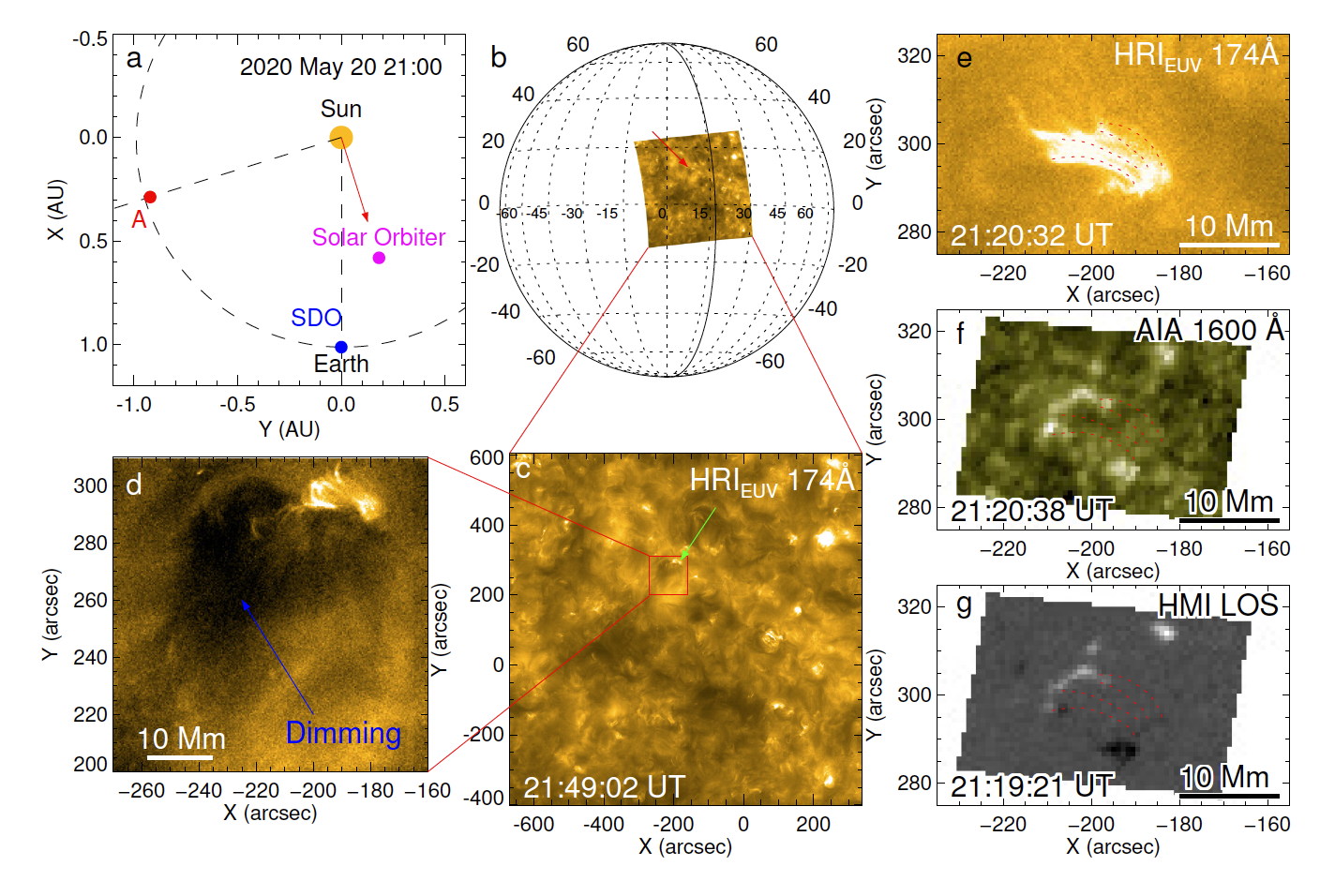
Figure 1. Joint observations of Solar Orbiter and Solar Dynamics Observatory on 20 May 2020. (a) Heliospheric positions of planets and spacecraft. (b) Location of the mini coronal dimming (red arrow) in HRIEUV 174 A. (c) and (d) Enlarged views of the dimming at different scales (see animation). (e) Post-eruption arcades (traced by red dotted curves) in HRIEUV 174A, with location shown by the green arrow in (c). (f) Flare ribbons in SDO/AIA 1600A. (g) SDO/HMI LOS magnetic fields.
Accompanying video for Figure 1
We use a differential emission measure (DEM; [3]) analysis with the AIA [4] EUV images at six passbands to examine the temperature and density properties of the coronal dimming (see Figure 2), and further to determine the CME mass from the dimming [5]. We aim to understand small-scale eruptions and their contributions to SEPs, the solar wind, and space weather.
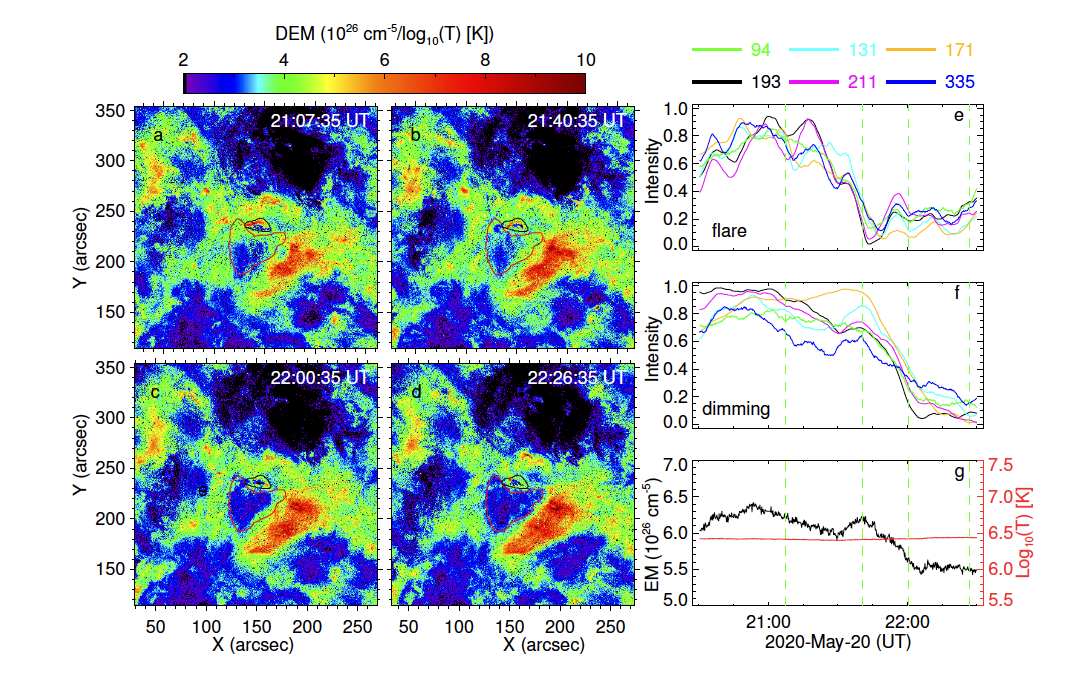
Figure 2. DEM analysis of the coronal dimming. (a-d) Time evolution of AIA 0.7 MK DEMs at four typical times. (e-f) EUV light curves of the normalized integrated intensities of the are region (black contour) and the dimming region within the heart-shaped area (red contour). (g) Averaged EM (black) and EM-weighted median temperature (red) within the dimming region as a function of time. The green vertical dashed lines mark the corresponding times in (a-d).
To determine the total evacuated mass M of the eruption, we use the following equation:

where n is the total number of pixels within the heart-shaped area in Fig.2, µ is the mean molecular weight of the hydrogen ion (µ = 1.27), mp is the proton mass, As is the area of the pixel, the integral of N(z) the total number of coronal plasma at each pixel in the dimming region along the LOS, and lambdap the pressure scale height defined as:
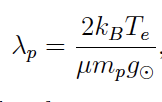
where kB is the Boltzmann constant, Te the electron temperature at each pixel calculated from the DEM analysis, and g the gravitational acceleration at the solar surface.
We obtain the value of the basal electron density N0 with the help of the EM measurement (for a detailed derivation, we refer to the previous implementation about CME mass determination in [5]): the EM is the square density averaged along the line of sight, and it is also based on an isothermal hydrostatic equilibrium assumption that the density of the coronal plasma in the dimming region is radially stratified [6]. Therefore:
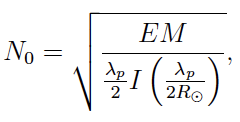
where RO is the solar radius, and I the integral quantity defined as:

We have set L = 5 lambdap in order to include as much mass as possible along the LOS.
The total evacuated mass is determined by the difference between the mass Mbefore before the eruption and the mass Mafter after the eruption, i.e.

Conclusions
The observations indicate that magnetic cancellation occurred before the eruption and likely resulted in a mini filament eruption. Then, the eruption results in the dimming and takes away approxmately 1.65 +/- 0.54 x 1013 g of mass, which also exhibits similar features as the sources of SEP events [7]. Our results fit the energy-mass relation [8], i.e., an eruption of Delta Efree ≈ 1027 ergs carries the mass in the order of 1013 g. The results suggest that weak constraining force makes the flux rope associated with the mini filament easily enter a torus-unstable domain and propagate slowly along a radial direction in the lower corona (see Figure 3). We discuss that weak magnetic constraints from low-altitude background fields may be a general condition for the quiet-Sun eruptions, which provides a possible mechanism for the transport of coronal material and energy from the lower to the middle or even higher corona. We have also made a survey of these small dimming events by Solar Orbiter for the first time (see the Table 1 in the published paper).
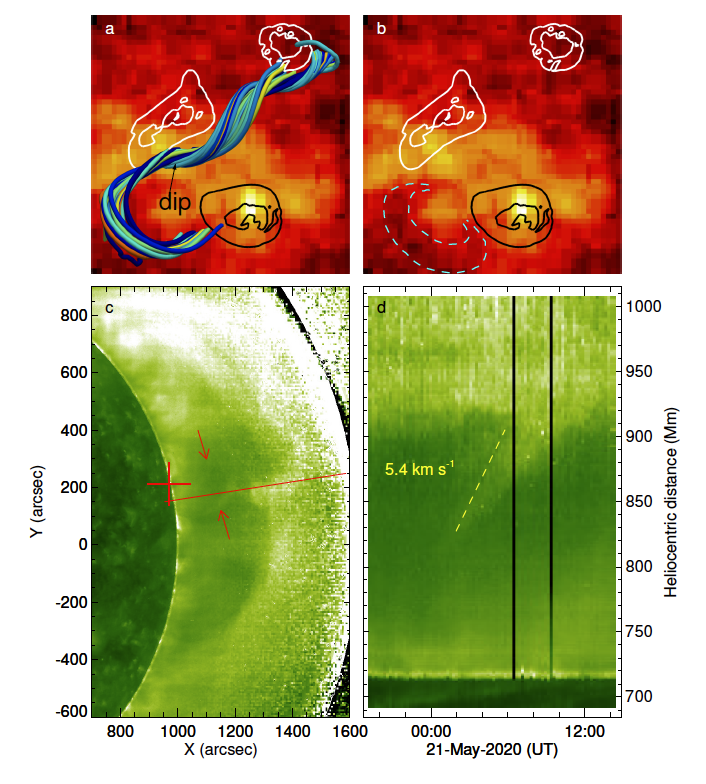
Figure 3. Magnetic topological structure of the small-scale filament (prominence) and its ascending process in the STEREO-A/EUVI view (see animation). (a) Reconstructed flux rope structure with the EUV background at 304A. The positive (white) in [20, 50] G and negative (black) fluxes in [-20, -50] G are overplotted. The rising part of the mini filament is contoured in cyan dashed lines in (b). (c) Side view from STEREO-A/EUVI of the ascending filament (red arrows) along a red radial line which shows the slit for the time-distance map in (d). The red cross marks the approximate position of the eruption source.
Accompanying video for Figure 3
This study has been published in Rui Wang, et al. 2023, ApJL, 952, L29, doi:https://doi.org/10.3847/2041-8213/ace437.
Acknowledgements:
The research was supported by National Key R&D Program of China No. 2022YFF0503800 and No.2021YFA0718600, NSFC under grants 12073032, 42274201, 42004145 and 42150105, the Specialized
Research Fund for State Key Laboratories of China. We acknowledge the use of data from Solar Orbiter and SDO.
Affiliations:
1State Key Laboratory of Space Weather, National Space Science Center, Chinese Academy of Sciences, Beijing 100190, People's Republic of China
2University of Chinese Academy of Sciences, Beijing 100049, People's Republic of China
3Key Laboratory of Space Weather, National Satellite Meteorological Center (National Center for Space Weather), China Meteorological Administration, Beijing 100081, People's Republic of China
4School of Earth and Space Sciences, Peking University, Beijing 100871, People's Republic of China
References
[1] Schrijver, C. J., Beer, J., Baltensperger, U., et al. 2012, Journal of Geophysical Research (Space Physics), 117, A08103, doi: https://doi.org/10.1029/2012JA017706
[2] Rochus, P., Auch ere, F., Berghmans, D., et al. 2020, A&A, 642, A8, http://doi.org/10.1051/0004-6361/201936663
[3] Plowman, J., & Caspi, A. 2020, ApJ, 905, 17, doi: http://doi.org/10.3847/1538-4357/abc260
[4] Lemen, J. R., Title, A. M., Akin, D. J., et al. 2012, SoPh, 275, 17, doi: http://doi.org/10.1007/s11207-011-9776-8
[5] Lopez, F. M., Hebe Cremades, M., Nuevo, F. A., Balmaceda, L. A., & V asquez, A. M. 2017, SoPh, 292, 6, doi: http://doi.org/10.1007/s11207-016-1031-x
[6] Aschwanden, M.J., 2004, Physics of the Solar Corona. An Introduction, doi: https://doi.org/10.1007/3-540-30766-4
[7] Sterling, A. C., Moore, R. L., Falconer, D. A., & Adams, M. 2015, Nature, 523, 437, doi: http://doi.org/10.1038/nature14556
[8] Drake, J. J., Cohen, O., Yashiro, S., & Gopalswamy, N. 2013, ApJ, 764, 170, doi: http://doi.org/10.1088/0004-637X/764/2/170
- Removed a total of (6) style text-align:left;
- Removed a total of (7) style margin:0;
Nuggets archive
2025
09/04/2025: Bursty acceleration and 3D trajectories of electrons in a solar flare
02/04/2025: Picoflare jets in the coronal holes and their link to the solar wind
19/03/2025: Radial dependence of solar energetic particle peak fluxes and fluences
12/03/2025: Analysis of solar eruptions deflecting in the low corona
05/03/2025: Propagation of particles inside a magnetic cloud: Solar Orbiter insights
19/02/2025: Rotation motions and signatures of the Alfvén waves in a fan-spine topology
12/02/2025: 'Sun'day everyday: 2 years of Solar Orbiter science nuggets that shed light on some of our star's mysteries
22/01/2025: Velocity field in the solar granulation from two-vantage points
15/01/2025: First joint X-ray solar microflare observations with NuSTAR and Solar Orbiter/STIX
2024
18/12/2024: Shocks in tandem : Solar Orbiter observes a fully formed forward-reverse shock pair in the inner heliosphere
11/12/2024: High-energy insights from an escaping coronal mass ejection
04/12/2024: Investigation of Venus plasma tail using the Solar Orbiter, Parker Solar Probe and Bepi Colombo flybys
27/11/2024: Testing the Flux Expansion Factor – Solar Wind Speed Relation with Solar Orbiter data
20/11/2024:The role of small scale EUV brightenings in the quiet Sun coronal heating
13/11/2024: Improved Insights from the Suprathermal Ion Spectrograph on Solar Orbiter
30/10/2024: Temporally resolved Type III solar radio bursts in the frequency range 3-13 MHz
23/10/2024: Resolving proton and alpha beams for improved understanding of plasma kinetics: SWA-PAS observations
25/09/2024: All microflares that accelerate electrons to high-energies are rooted in sunspots
25/09/2024: Connecting Solar Orbiter and L1 measurements of mesoscale solar wind structures to their coronal source using the Adapt-WSA model
18/09/2024: Modelling the global structure of a coronal mass ejection observed by Solar Orbiter and Parker Solar Probe
28/08/2024: Coordinated observations with the Swedish 1m Solar Telescope and Solar Orbiter
21/08/2024: Multi-source connectivity drives heliospheric solar wind variability
14/08/2024: Composition Mosaics from March 2022
19/06/2024: Coordinated Coronal and Heliospheric Observations During the 2024 Total Solar Eclipse
22/05/2024: Real time space weather prediction with Solar Orbiter
15/05/2024: Hard X ray and microwave pulsations: a signature of the flare energy release process
01/02/2024: Relativistic electrons accelerated by an interplanetary shock wave
11/01/2024: Modelling Two Consecutive Energetic Storm Particle Events observed by Solar Orbiter
2023
14/12/2023: Understanding STIX hard X-ray source motions using field extrapolations
16/11/2023: EUI data reveal a "steady" mode of coronal heating
09/11/2023: A new solution to the ambiguity problem
02/11/2023: Solar Orbiter and Parker Solar Probe jointly take a step forward in understanding coronal heating
25/10/2023: Observations of mini coronal dimmings caused by small-scale eruptions in the quiet Sun
18/10/2023: Fleeting small-scale surface magnetic fields build the quiet-Sun corona
27/09/2023: Solar Orbiter reveals non-field-aligned solar wind proton beams and its role in wave growth activities
20/09/2023: Polarisation of decayless kink oscillations of solar coronal loops
23/08/2023: A sharp EUI and SPICE look into the EUV variability and fine-scale structure associated with coronal rain
02/08/2023: Solar Flare Hard Xrays from the anchor points of an eruptive filament
28/06/2023: 3He-rich solar energetic particle events observed close to the Sun on Solar Orbiter
14/06/2023: Observational Evidence of S-web Source of Slow Solar Wind
31/05/2023: An interesting interplanetary shock
24/05/2023: High-resolution imaging of coronal mass ejections from SoloHI
17/05/2023: Direct assessment of far-side helioseismology using SO/PHI magnetograms
10/05/2023: Measuring the nascent solar wind outflow velocities via the doppler dimming technique
26/04/2023: Imaging and spectroscopic observations of EUV brightenings using SPICE and EUI on board Solar Orbiter
19/04/2023: Hot X-ray onset observations in solar flares with Solar Orbiter/STIX
12/04/2023: Multi-scale structure and composition of ICME prominence material from the Solar Wind Analyser suite
22/03/2023: Langmuir waves associated with magnetic holes in the solar wind
15/03/2023: Radial dependence of the peak intensity of solar energetic electron events in the inner heliosphere
08/03/2023: New insights about EUV brightenings in the quiet sun corona from the Extreme Ultraviolet Imager








































 Sign in
Sign in
 Science & Technology
Science & Technology